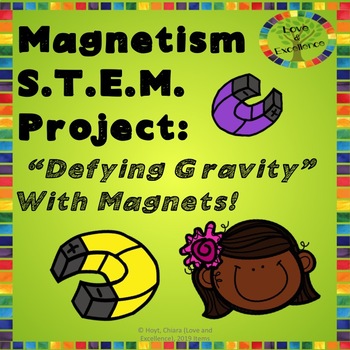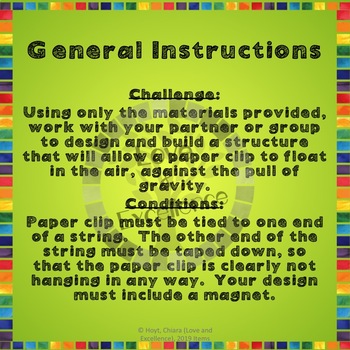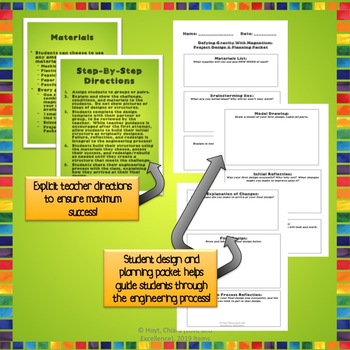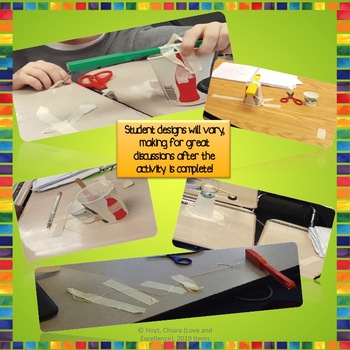STEM Activities & Challenges: 2nd & 3rd Grade Magnetism Project
- Zip
Also included in
- This Science Magnet unit has everything you need to teach all about magnets in elementary school! Included in this pack is a multi-day PowerPoint, aligned flashcards, worksheets and assessment, as well as an experiment, which all can be used to help your students meet with the most success!With thePrice $7.20Original Price $8.00Save $0.80
Description
This STEM activity and challenge uses the properties of magnetism and the principles of engineering design to challenge students to design and create a structure that will allow a paperclip to "float" and "defy gravity." Step-by-step directions and materials list are both provided for the teacher to allow for maximum student success. A student design and planning packet is also provided to ensure that students carefully navigate the engineering design process during this STEM challenge. Students of widely varying ability levels in 2nd and 3rd grade have loved this STEM challenge in the past, and I know your students will love it, too!
*Please leave feedback to earn credit toward future TpT purchases. I value and respond to all feedback!*
You May Also Like:
Magnets Unit:






